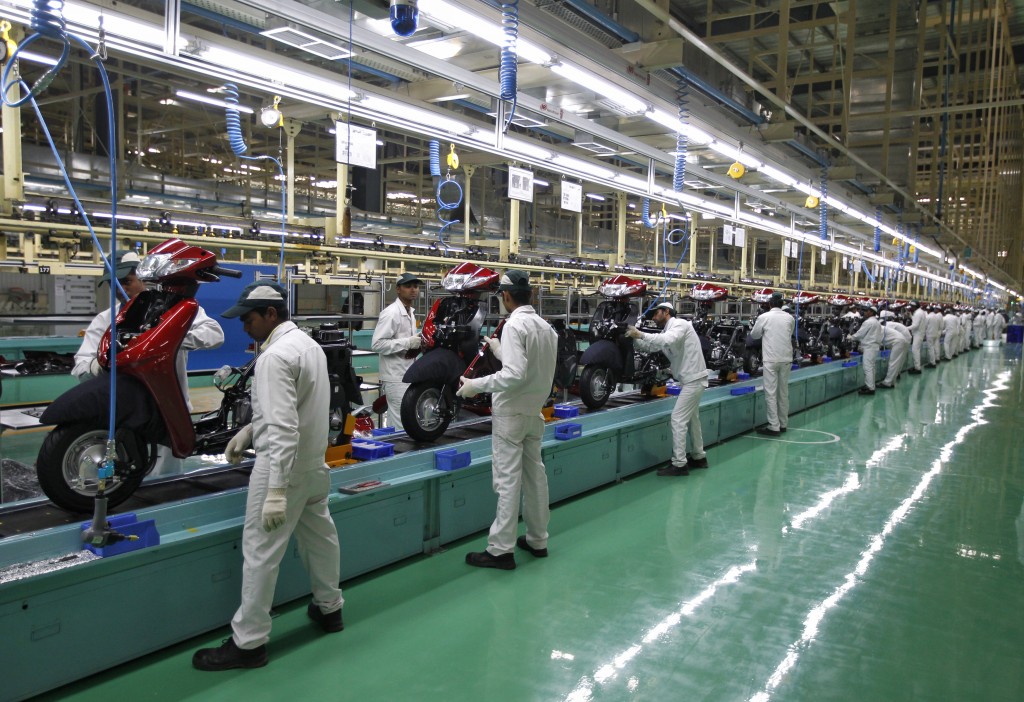
NEW Delhi: Manufacturing activity accelerated to an eight-month high in March on the back of an increase in new export orders and improved domestic demand, pointing to an upturn in the crucial sector, a survey showed on Monday.
Registering above the crucial 50 threshold for the third consecutive month in March, the adjusted Nikkei India Manufacturing Purchasing Managers’ Index (PMI) — a composite single figure indicator of manufacturing performance — moved to 52.4 from the previous month’s 51.1. The 50 point mark separates expansion from contraction.
The PMI survey is based on data compiled from monthly replies to questionnaires sent to purchasing executives in over 300 industrial companies. This is seen as a key advance indicator for the manufacturing sector. “We should expect another quarter of robust economic growth in the last quarter of the 2015-16 financial year. The Manufacturing PMI ticked higher in March, providing welcome reassurance that the sector has moved further away from the flood-related contraction seen in December,” said Pollyanna De Lima, economist at Markit.
Latest data showed the core sector spanning eight key infrastructure industries — coal, steel, electricity, cement, fertilizer, refinery products, natural gas and crude oil — grew an annual 5.7% in February compared to 2.3% expansion in same period last year, and more than previous month’s 2.3% year-on-year growth.
This was the strongest expansion in 15 months and augured well for industrial output data, which is due later in the month. The core sector accounts for nearly 40% of the index of industrial production, which has been in negative territory for the past three months.
The PMI survey showed the positive developments in the sector encouraged companies to buy more inputs, but workforce numbers were left broadly unchanged. On the price front, cost inflation accelerated, while charges were raised to the greatest extent since November 2014.
Production growth accelerated to the fastest since August 2015, amid a stronger upturn in new business inflows. The latest expansion was widespread across the three monitored sub-sectors, with consumer goods posting the quickest rate of increase.
March data highlighted a third successive monthly rise in order books, which panellists associated with improved demand from both domestic and external clients. New business inflows increased at a solid pace and one that was the most pronounced since last July. Growth of new export orders was sustained, but the rate of expansion remained slight.
Buying levels increased further in March, which survey participants linked to stock-building initiatives.
Although quicker than in February, the rate of growth was slight overall.
“In addition to the underlying growth picture, a lot of focus remains on the trend in prices. On this front, March’s survey suggests that inflationary pressures in manufacturing are on the upside, with cost burdens rising at the quickest pace in three months and output charge inflation reaching a 16-month high,” said De Lima.
“Falls in commodity and oil prices were offset by the weaker rupee making imported raw materials costlier. This build-up in inflationary pressures may lead the Reserve Bank of India to hold off from cutting rates, especially as solid growth was seen,” said De Lima.